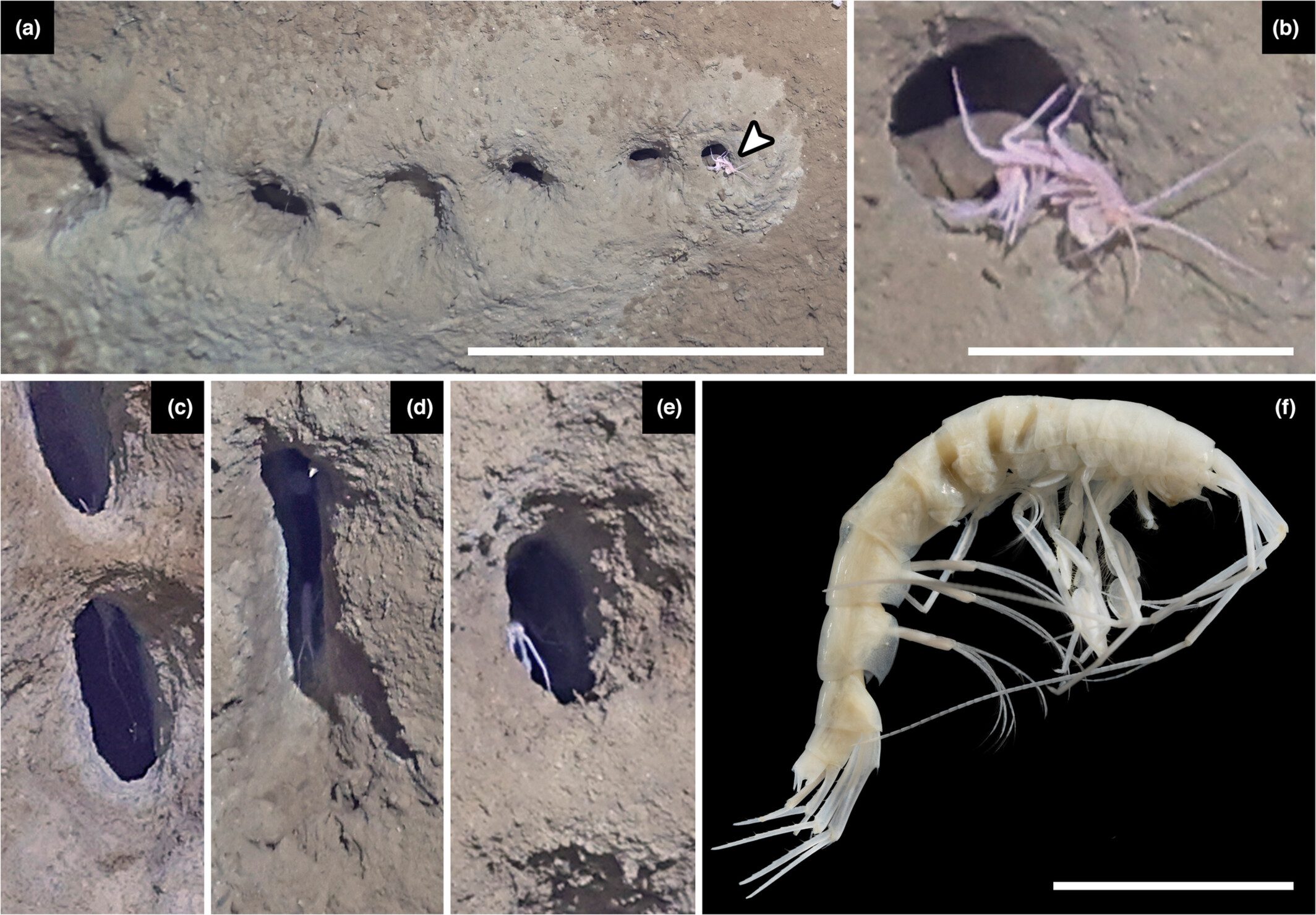Strange, unexplained holes in the seafloor have long been an unsolved deep-sea mystery. Now, a sprinkling of unusual pits at the bottom of the Bering Sea may have an explanation. The architects of this perplexing phenomenon? Teeny tiny critters called amphipods.
While studying the biodiversity of the Aleutian Trench near Alaska, a team of researchers stumbled across the lines of holes in the seafloor. Further exploration revealed that they are connected by almost 200 horizontal underground tunnels, which, in what the team call “the first plausible hypothesis” to explain these constructions, they suggest may be the work of amphipods.
Amphipods are tiny shrimp-like crustaceans that happen to be the fastest snappers in the sea, and range in size from 1 to 340 millimeters (0.04 to 13.4 inches). Some species are known to make burrows, boring down into the seabed to a nutritious sediment layer where they then simultaneously eat and dig themselves a tunnel.
The researchers believe this behavior could be what’s causing the peculiar holes littering the Bering Sea floor. In one photo, an amphipod, which they think is from the genus Maera, can be seen at the exit of one of the holes. The diminutive critter is about the right size and has legs specialized for digging, making it a pretty good culprit. Similar large amphipods were also seen within the burrows several times.
It was a moment of déjà vu for study author Angelika Brandt, who had previously observed very similar burrowing in another species of amphipod and reportedly “jumped out of her chair” when she saw it, according to New Scientist.
A total of 96 animals were spotted in or near the holes, including urchins and Giant Grenadier fish (Albatrossia pectoralis), but none quite fit the bill. Fish are too large to enter the burrows and don’t tend to make linear nests, while urchins couldn’t enter the narrow passage into the horizontal chamber.
Amphipods, however, do seem to have what it takes. The authors collected a specimen Maera amphipod from near the burrows and concluded that it is likely a new species creating the mystifying holes.
Aside from looking odd and sparking a marine mystery, the Bering Sea holes have a profound ecological impact: they provide three-dimensional complexity to the otherwise flat abyssal plain, creating habitats for many species.
“These striking structures contribute to local biodiversity, and their maker could be considered a deep-sea ecosystem engineer,” the study authors write.
That may be one bizarre ocean holes enigma finally solved, but plenty more remain. Off the coast of California, thousands of pockmarks on the seafloor have puzzled scientists for more than a decade, while in the Atlantic, strange oblong holes that look “almost human made” also continue to baffle.
The study is published in Ecology and Evolution.
Source Link: We May Now Know What Made The Mysterious Holes At The Bottom Of The Bering Sea
